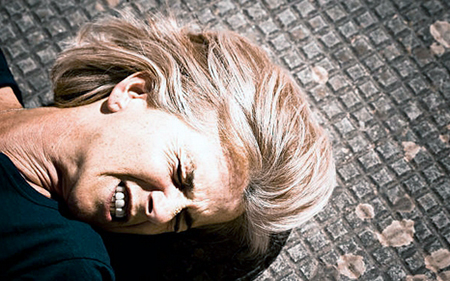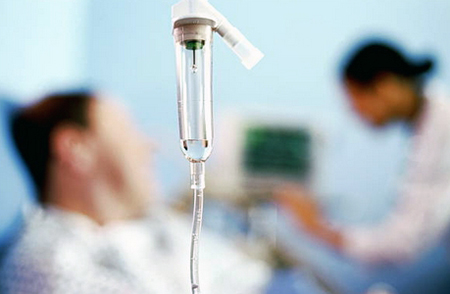Seizures of central origin – what are they and how are they treated?


Convulsive syndrome is a common urgent pathology in kids. Severe seizures in kids occur 5 times more often than in adults. The incidence of seizures in kids is 17-20 cases per 1000. About half of all seizures happen before the age of 15 years. Most of them are observed between the ages of 1 and 9 years. Seizures are associated with about 10% of pediatric emergency calls. Childhood seizures are explained both by the characteristics of the child's central nervous system (CNS) and by the variety of reasons that cause them.
Seizures are involuntary muscle contractions that appear suddenly, can be of varying duration and are a clinical sign of CNS damage. There are epileptic and non-epileptic seizures (epileptic and encephalic reactions, respectively).
Short information about seizures of central origin
The reasons for the generalized response of the nervous system to various stimuli:
- Increased convulsive readiness (lowered threshold in which brain's anti-seizure protection fails) of the child's brain due to the immaturity of neurological structures (mainly the cerebral cortex);
- Immaturity of mechanisms of inhibitory control of bioelectric activity;
- Failure of myelination processes;
- Hypersensitivity to hypoxia;
- High hydrophilicity of the brain parenchyma and permeability of cell membranes;
- Lability of the main extra- and intracranial homeostatic mechanisms.
Diseases in which the development of convulsive conditions in children is possible:

- Congenital brain abnormalities (cerebral dysgenesis);
- Intrauterine infections;
- Chromosomal syndromes: trisomy on chromosome 21, trisomy on chromosome 4, circular chromosome 14, etc.;
- Hereditary metabolic defects - aminoacidopathies (phenylketonuria, hyperglycinemia, leucinosis), organic acidurias and acidemias, mitochondrial encephalomyopathies;
- Hereditary neurocutaneous syndromes;
- Perinatal (during birth) lesions of the nervous system;
- Neuroinfections (meningitis, encephalitis, etc.);
- General infectious diseases (flu, sepsis, etc.);
- Traumatic brain injury;
- Brain tumors;
- Metabolic disorders;
- Toxic effects on the CNS - acute poisoning with carbon monoxide, poisonous fungi, bilirubin encephalopathy, withdrawal symptoms associated with the intake of narcotic drugs by a pregnant woman.
- Vascular diseases of the CNS (strokes, aneurysms).
Despite the fact that seizures can be caused by multiple causes, most of the time, the reason for their development is the disorder of central hemodynamics, leading to hypoxia (insufficient oxygen supply to organs), acidosis and other metabolic disorders in the CNS.
Increased blood vessels and cells penetrability with instability of water-salt metabolism and high salt content in the blood, leads to swelling of the brain (cerebral insufficiency syndrome). This promotes increased convulsive readiness.
Non-epileptic seizures include epileptic and encephalic reactions.
Epileptic reaction - the appearance of generalized seizures in response to exogenous exposure (infection, intoxication, trauma, hyperinsolation, overwork):

1. Febrile seizures - episodes of seizures due to fever.
2. Affective-respiratory seizures occur in children against a background of neuropathy (more often at the height of affect).
Encephalic reaction is a manifestation of metabolic encephalopathy (disorders of vascular, cerebrospinal fluid metabolism, for example, in vegetative-vascular dystonia).
Signs of non-epileptic seizures are:
- Lack of data on structural brain damage;
- The presence of somatic, neurological, mental disorders, personality and behavioral disorders that can cause paroxysmal non-epileptic disorders;
- The presence of a provoking factor;
- Inconsistency of the seizure pattern with the typical manifestations of the main epileptic seizures and the pathophysiological mechanisms of their development;
- Pronounced emotional component;
- Absence of post-seizure confusion of consciousness and sleep (if there are no specific somatic reasons);
- The absence of characteristic changes in the electroencephalogram (EEG) in the interictal period and changes in the EEG pattern in connection with an attack.
Most often, the problem of differential diagnosis is created by cases of conversion psychogenic pseudoepileptic seizures. Such an attack, as a rule, provokes the presence of a certain situation, which reminds of a previously traumatic episode that took place. An attack always occurs in the presence of third parties and is accompanied by a fall.
Epilepsy is a disease (disorder) of the brain, characterized by a persistent predisposition to the generation (development) of epileptic seizures, as well as neurobiological, cognitive, psychological and social aftermaths of this condition. This is a chronic polyetiological (can be caused by different causes) condition, which is characterized by repeated, unprovoked epileptic seizures. The obligatory conditions for the development of epilepsy include the formation of a pathological phenomenon - an epileptic focus (a group of neurons capable of self-excitation).
Clinical picture
According to clinical manifestations, seizures can be partial (focal), spreading to limited muscle groups, and generalized - in the form of a general, centralized, seizure. Generalized seizures occur when both hemispheres of the brain are involved in the process, partial seizures - certain areas of one hemisphere.

According to the types of muscle contractions, there are clonic and tonic seizures. Clonic seizures are distinguished by a rapid change in contraction and relaxation of skeletal muscles. In tonic cramps, an extended muscle contraction occurs without periods of relaxation. In kids, especially small kids, seizures in most cases are generalized and mixed, i.e. tonic and clonic altogether.
Absancies are a form of small seizures that are observed in children of different ages and are characterized by a short stop of gaze; in this case, sucking and chewing movements, redness or paleness of the face, abduction of the eyeballs can be observed.
Repetition of severe seizures without recovery of consciousness is called convulsive status. It is accompanied by respiratory failure and high risk of brain swelling. In this condition, breathing stops, the skin becomes pale-bluish, bradycardia appears. This is the tonic phase. In about a minute, breathing resumes, twitching of the facial muscles is observed. Muscle cramps spread to the trunk and limbs. The clonic phase of the seizure develops. Involuntary urination and defecation are possible. After the end of the attack, consciousness is gradually restored. An unfavorable sign is the occurrence of local neurological symptoms (paresis, paralysis).
In pediatric practice, a condition such as syncope is often encountered - loss of consciousness and postural tone due to cerebral hypoperfusion with spontaneous recovery. Syncope can occur as a result of orthostatic collapse (a drop in blood pressure upon standing), cardiac dysfunction, impaired blood redistribution in the body with its accumulation in the vessels of the abdominal cavity, with rapid emptying of the bladder (nocturic syncope), emotional stress, etc.
Cerebral (neurogenic) syncope - syncope as a result of disorders of cerebral autoregulation and vasospasm, leading to hypoxia without a drop in systemic blood pressure (BP).
Convulsive syncope is any type of syncope accompanied by seizures.
Signs of clinical manifestation of syncope:

- Trigger factors: standing position, being in a hot stuffy room, overeating, unpleasant (painful) sensations;
- Prodromal symptoms of cerebral ischemia - weakness, dizziness, visual and hearing impairments, numbness of the limbs;
- Gradual development (from a few seconds to a minute);
- Pallor, perspiration;
- Decrease in systemic blood pressure and / or heart rhythm disturbances;
- Short duration (1-30 s);
- Fast recovery without postictal confusion and sleep;
Uncharacteristic: convulsions (except myoclonic), urinary incontinence, tongue biting.
Vasovagal syncope - can be accompanied by reflex anoxic seizures, bradycardia, asystole, and prolonged expiratory apnea in children.
Situationally provoked syncope - in case of a sharp increase in intrathoracic (in-chest) pressure (for instance, cough), nocturic syncope, syncope during bowel movements. Syncope with irritation of the carotid sinus (hypersensitivity is typical for people over 50 years old).
Cardiogenic syncope - with rhythm disturbances (tachyarrhythmia, bradyarrhythmia), structural heart damage (aortic and mitral stenosis, heart tumors, cardiomyopathy, coronary heart disease). The mortality rate for cardiogenic syncope reaches 50% within 3 years after the first episode.
Signs of cardiogenic syncope:
- Pain and discomfort in the region of the heart, rhythm disturbances, chest pain;
- Develop in any position of the body;
- Provoked by physical or emotional stress;
- Anoxic seizures are possible;
- Heart rate with tachyarrhythmia can be more than 150-180 beats / min and with bradyarrhythmias 30-35 beats/min;
- Attacks are sudden, short with a quick recovery of consciousness;
- Prolongation of the QT interval;
- A drop in blood pressure is possible.
It must be remembered that syncope can be induced by taking medications such as calcium channel blockers, dioxidine.
Treatment of convulsive conditions

Therapeutic measures for seizures should be aimed at restoring normal breathing and lowering the excitability of the CNS. To ensure airway clearance, the kid's oral cavity and pharynx should be freed of mucus, food or vomit, prevent tongue retraction by lifting the lower jaw by the corners or installing an air duct. The kids head must be turned to the side to prevent aspiration, i.e. entering of foreign bodies or substances (e.g. vomit) in the airways, when breathing is restored. Free the kid from tight clothing that makes breathing difficult and provide fresh air (for instance, open a window) or oxygenate through a catheter, mask or oxygen bag. Children with convulsive syndrome need hospitalization in the intensive care unit.
The intensive care complex consists of several main areas:
- Etiological and pathogenetic treatment of the underlying disease, which is accompanied by the occurrence of seizures, correction of violations of vital functions - the respiratory, cardiovascular system.
- Pathogenetic therapy aimed at eliminating seizures and brain hypoxia.
- Correction of the main indicators of extra- and intracranial homeostasis.
- Symptomatic therapy aimed at eliminating hyperthermia, prophylactic antibiotics, adequate parenteral nutrition (especially in the case of coma), intensive observation and patient care.
Anticonvulsant therapy

To relieve a convulsive state, are used the following medicines:
Intravenous administration of 0.5% seduxene solution in a single dose of 0.35-0.5-0.7 mg / kg body weight.
With the ineffectiveness of the anticonvulsant effect of seduxen:
1. Sodium hydroxybutyrate;
2. Water-soluble phenobarbital (dose - 5-10-15 mg/kg);
3. Water-soluble hydantoins (phenytoin, epanutin, fengidan).
4. Other benzodiazepines.
In some cases, to prolong the anticonvulsant action, these drugs can be combined with the administration of pipolfen, droperidol, fentanyl, idocaine, chlorpromazine, magnesium sulfate (intravenously), etc.
For non-arresting seizures, the drugs of choice are short-acting barbiturates , inhalation anesthesia is also used using a mixture of nitrous oxide and oxygen in a 2: 1 ratio or fluorothane.
In cases of resistance, it is advisable to use muscle relaxants and transfer the patient to controlled breathing apparatus.
Dehydration therapy (prevention of cerebral edema):
- Magnesium sulfate (25% solution 1 ml per year of life);
- Furosemide 3-5 mg / kg;
- 15-30% mannitol solution 5-10 ml / kg;
- Lumbar puncture;
- 10% calcium chloride (1 ml per year of life).
Kids with seizures of unclear cause or those that have them while being ill with an infectious disease are subject to hospitalization after receiving emergency assistance to conduct a diagnostic search, treat brain swelling and resolve the issue of the need and possibility of performing a therapeutic and diagnostic lumbar puncture. If epilepsy is established, the selection of long-term basic therapy is necessary consisting of anticonvulsant (e.g. Phenytoin), muscle relaxers (e.g. Tizanidine), and other medicines.
Children who have had seizures associated with fever need to be prevented from recurrent seizures. Recently, preference has been given to intermittent prevention methods: in the period of risk of developing seizures (e.g. infectious diseases), children are prescribed complex therapy, including antipyretic and anticonvulsants, and in case of hypertensive hydrocephalic syndrome, acetazolamide or glycerol (glycerin) is additionally appointed.
Post by: Natalie Keller, M.D. General Health Centre, Minneapolis, Minnesota
(Updated at Apr 14 / 2024)
Zanaflex articles:
Some of the trademarks used in this Web Site appear for identification purposes only.
All orders are reviewed by a licensed physician and pharmacist before being dispensed and shipped.
The statements contained herein are not intended to diagnose, treat, cure or prevent disease. The statements are for informational purposes only and is it not meant to replace the services or recommendations of a physician or qualified health care practitioner. If you have questions about the drugs you are taking, check with your doctor, nurse, or pharmacist.